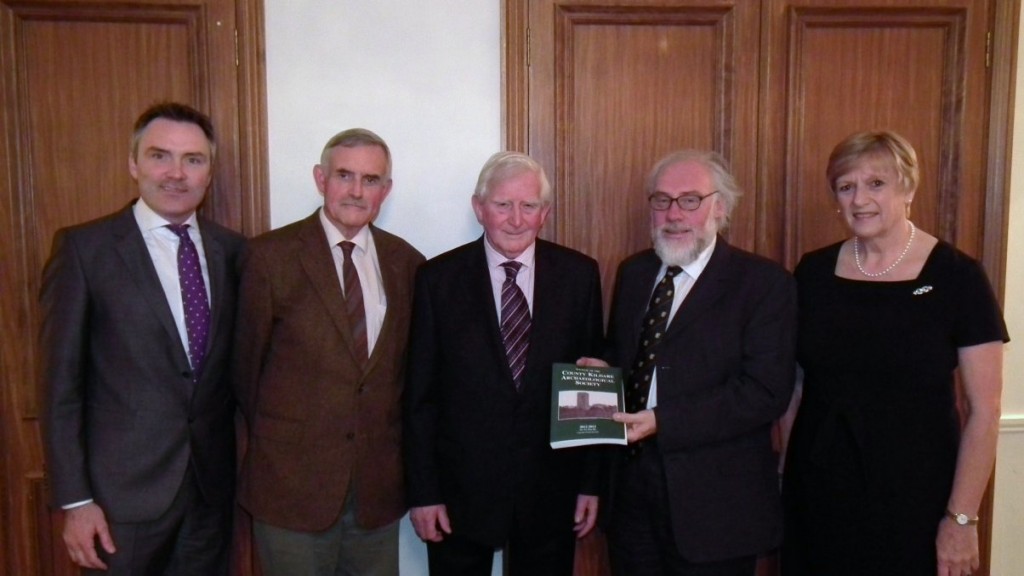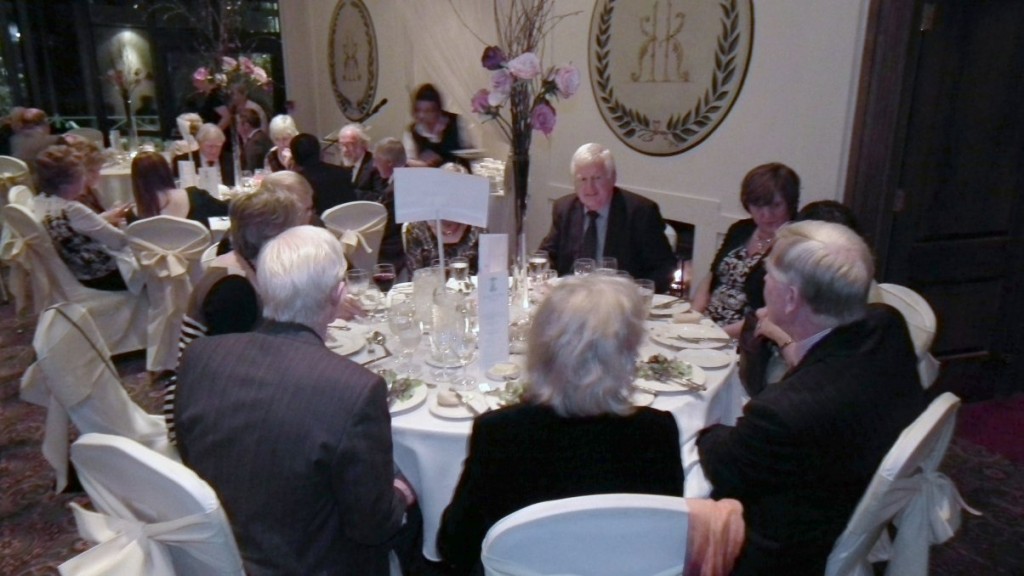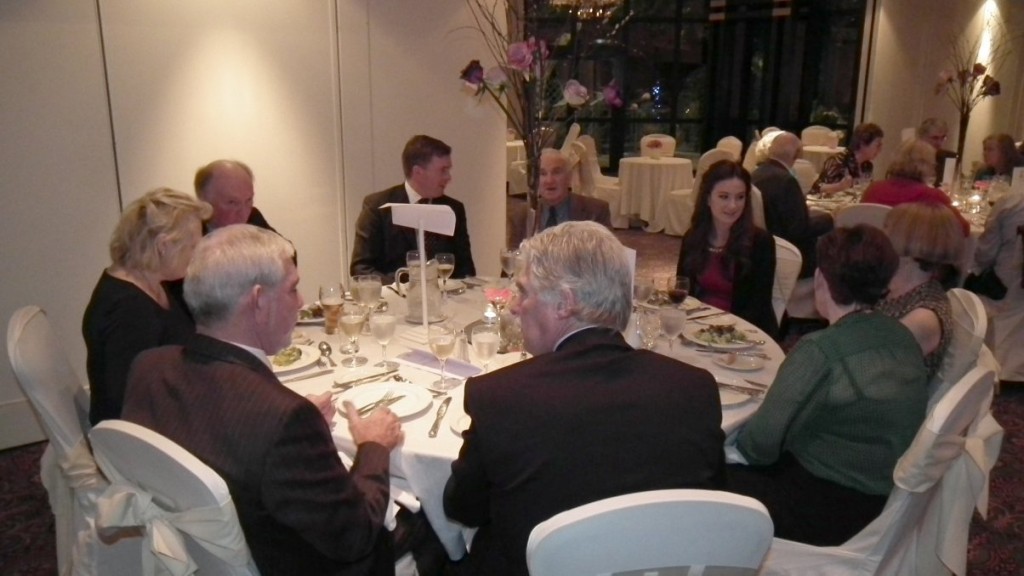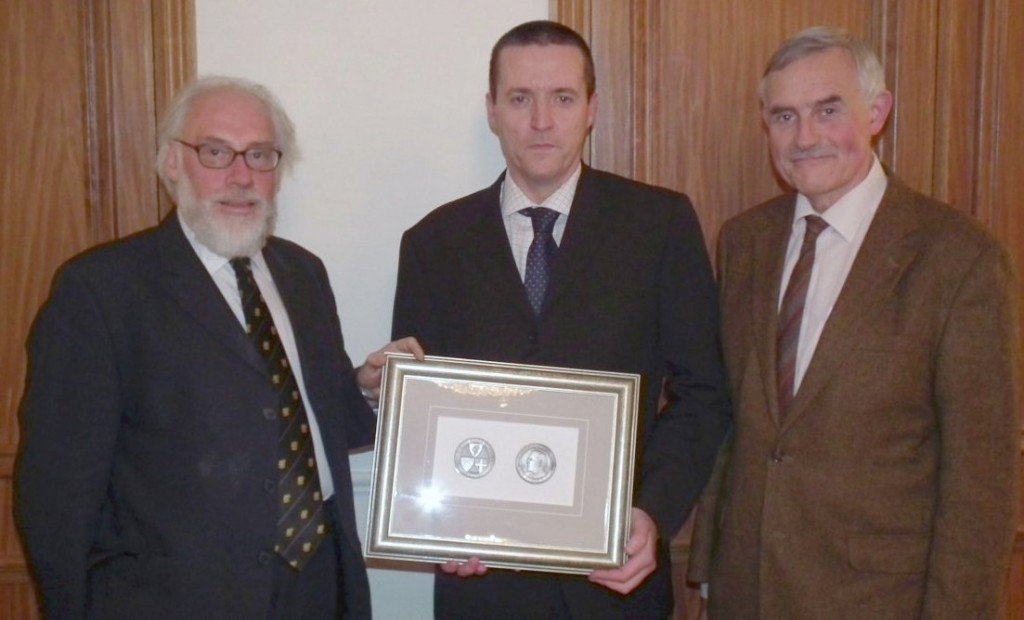The Society launched its 2012-2013 Journal, Vol XX (Part III) at a dinner held at the Hotel Keadeen, Newbridge, on Saturday 19th October.
Almost 400 pages in length, this Journal is by far the largest produced by the Society and contains a variety of well-written Papers ranging from a serious osteo-archaeological examination of human remains from an excavation for the study of Health in Medieval Ireland, to a delightful account in the Notes and Queries section extracted from the Garden Book of Geraldine, Countess of Mayo, on the design and construction of her Garden at Palmerstown House between 1891 and 1923.
Conleth Manning, President, stated that the Society is fortunate in having such a wonderful scholar as Professor Raymond Gillespie of NUI Maynooth to edit the Journal, with the support of Assistant Editor, Eamon Kane. He also expressed the Society’s gratitude to the County Kildare Leader Partnership for grant aid towards the production of the Journal, and to Kildare County Council for financial support.
With his usual skilful balance of intellect and good humour, Professor Gillespie did not disappoint his audience by filling the role of Guest Speaker once again for the launch of a Journal. In his opening remarks, he stated that to be invited once could be considered as “innovation”, and to be asked again it might be “custom”. But after the many times he had been invited it seemed now to be more of an “institution”, and additionally, the Professor felt the need to explain himself for the vast expense the Society had been put to in the making of this, the largest Journal they have ever produced!
Professor Gillespie was stuck by the similarities between the new Journal and that produced by the Society a hundred years ago, pointing out that it really had not changed much over time. For example, in 1913 the Council cut the print run from five hundred to three hundred due to lack of demand because of what could easily be a 2013 explanation – that of emigration!
Although there were similarities in the subject matter of some of the Papers such as that by Brian McCabe who re-visited Kilashee, the few obvious differences to the 1913 Journal were size, production and postage costs and the absence of any genealogical paper whatsoever. In 1913 the Journal was one hundred and thirty pages long and cost £50 to produce (specific delivery methods were not recorded); the 2013 issue is three hundred and eighty pages in length and cost around €5000 to produce and €1600 to post. The Professor remarked that in 1913, His Grace the Duke of Leinster contributed £25 towards production costs, and in 2013 we now have the County Kildare Leader Partnership to thank for providing grant aid specifically for the Journal and Kildare County Council for their general support for the Society.
Finally, on launching this latest edition, Professor Gillespie emphasised that the Society’s Journals are at the cutting edge of Irish historical study and reflect much of what is going on in the wider world. It is a Journal for everyone, designed to inform, to infuriate and to provoke people to write. He stated “It’s a Journal for our times, but then perhaps not – it’s very big and there are no cuts!”
The 2013 Lord Walter FitzGerald Prize for Research was presented by Conleth Manning to Mark McLoughlin for his essay “The Killing of Lieutenant John Hubert Wogan-Browne at Kildare on 10 February 1922: A test of Anglo-Irish Relations”, which is the opening Paper of the new Journal. In accepting, Mark thanked the Society for awarding him this valuable and prestigious prize and was grateful and privileged to receive it.
Mark spoke on the delicacy of the subject matter of his essay and expanded on how he had carried out his research, stating that to carry out this particular research twenty or thirty years ago one would have provoked a frosty reception. However, research methods have changed and access to archives has improved dramatically.
The next Journal will be launched in 2015, and papers for the 2015 Lord Walter Prize should be submitted by 14 September 2014.
Report & Photographs: Elizabeth Connelly







